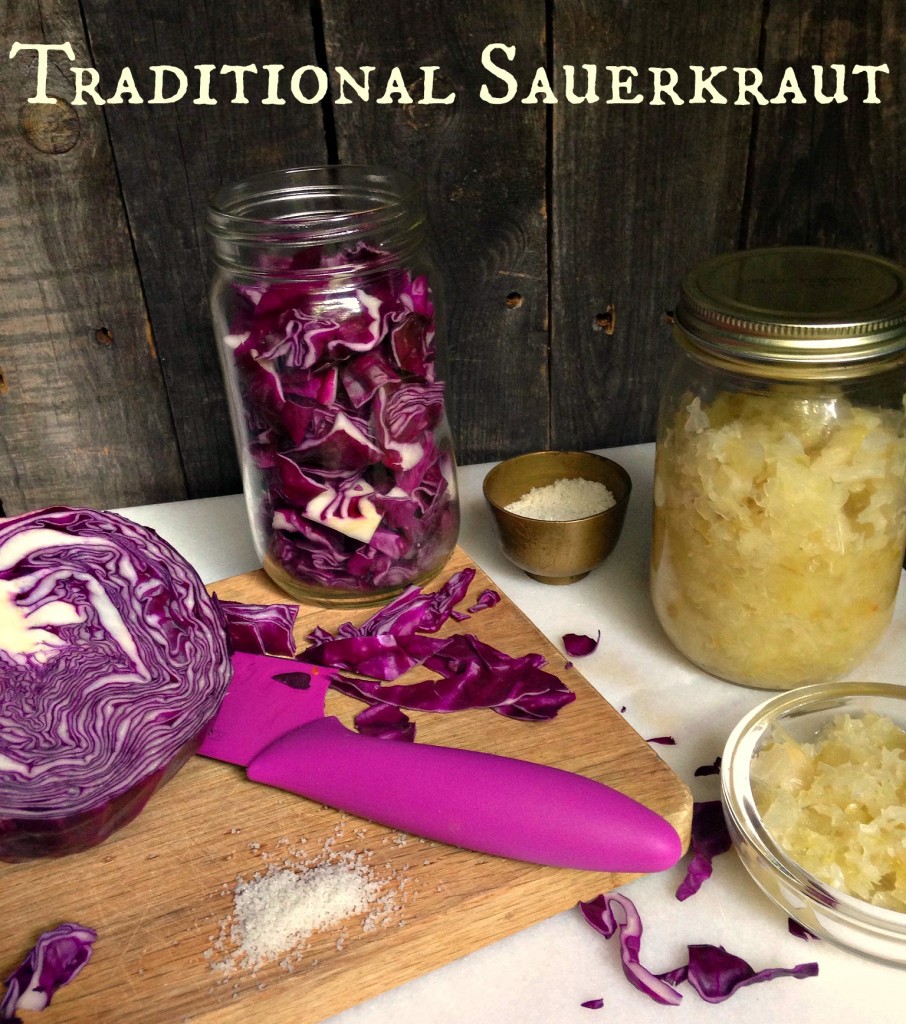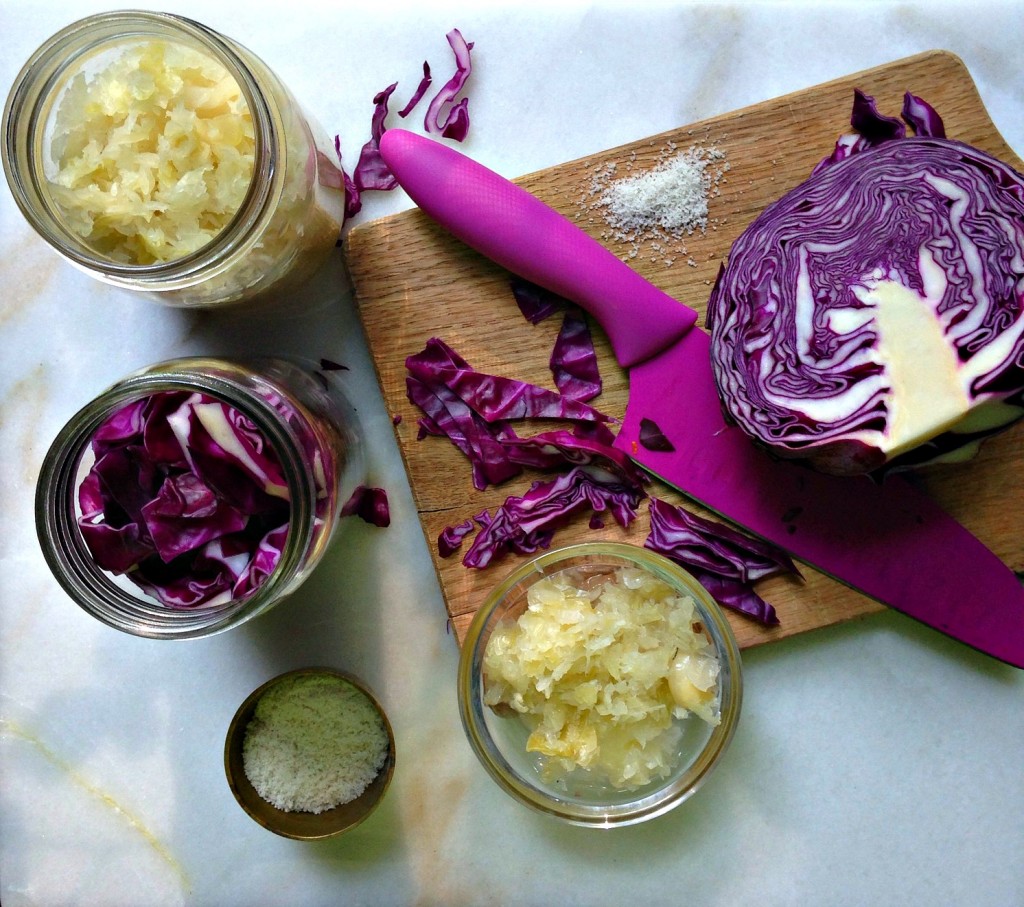the health benefits of sauerkraut
 As humans consistently attempt to pack more activities into the same 24 hour day span, convenience has shifted from a luxury to a necessity. Unfortunately, many of the conveniences we enjoy have been paid for with our health. One modern amenity, however, has increased the availability of fresh, healthy food. But how did our ancestors manage to eat healthy year round without the refrigeration we take for granted today? Before food was freighted across the country by the refrigerated truckload, people had to figure out a way to preserve their feasts for times of famine. Either by some miraculous insight, trial and error, or merely a mistake, ancient cultures across the globe discovered that forgetting a bowl of leftovers in the corner for a few days could actually increase its health benefits (and garuntee you a lunch in the dead of winter).
As humans consistently attempt to pack more activities into the same 24 hour day span, convenience has shifted from a luxury to a necessity. Unfortunately, many of the conveniences we enjoy have been paid for with our health. One modern amenity, however, has increased the availability of fresh, healthy food. But how did our ancestors manage to eat healthy year round without the refrigeration we take for granted today? Before food was freighted across the country by the refrigerated truckload, people had to figure out a way to preserve their feasts for times of famine. Either by some miraculous insight, trial and error, or merely a mistake, ancient cultures across the globe discovered that forgetting a bowl of leftovers in the corner for a few days could actually increase its health benefits (and garuntee you a lunch in the dead of winter).
Wait, what?
Under the right conditions, food left to sit out for several days will undergo a process that not only preserves the available nutrients, but also makes them more readily assimilated by our bodies. The process is known as lacto-fermentation, and its use has been documented in some form by nearly every ancient culture across the world.
The healthiest part of your frank
One of the best known varieties of lacto-fermented foods was engineered by the Germans, and graciously borrowed by Americans who also yearned for something tangy on their hot-dogs. Sauerkraut, (literally meaning soured cabbage) has been used for centuries not only for its distinctive tang, but also for its health giving properties.
Friendly bacteria
While our society has come to fear bacteria and anything associated with it, the beneficial strands (or probiotics) are an integral part of our health. To simplify an incredibly complex (and not yet fully understood) biological system, our bodies classify bacteria into two categories; good and bad. Probiotics, or good bacteria, are not only beneficial to our health, but are a necessity. They may be tiny, but the role they carry out within our bodies cannot be understated; governing internal functions, regulating immune response, and preventing inflammatory disease are just a few of their capabilities.
The sour taste in sauerkraut comes from lactic acid, a natural preservative that is produced by bacteria present on the leaves of raw cabbage. When given the chance to sit undisturbed in a salty brine, the bacteria will go to town on the sugars and starches found in the cabbage, changing them into complex nutrients that can then be used by our bodies. The acid that is formed allows the finished jar of kraut to last for months, which is great news if you happened to live before the introduction of Maytag appliances. But the preservation perks are secondary compared to the health benefits of sauerkraut. The process of fermenting transforms raw foods into truly living foods, teeming with the beneficial bacteria our bodies need. Those little guys also do us a favor, by breaking down the nutrients found in cabbage into more digestible forms, as well as transforming simple sugars into complex nutrients. Fermented cabbage has detoxifying abilities, and contains isothiocyanates, known to prevent cancer growth. It also contains more vitamin B than in its pre-fermented form. We’ve always known that cabbage was good for us, it just turns out that letting it sit around for a while makes it even better.  If you feel like passing on the 30 dollar bottle of probiotics in the health food store, you can head to the produce section and pick up a head of organic cabbage. The remaining ingredients you should already have in your kitchen cabinets. Directions: Finely shred cabbage into a large mixing bowl and pound or squeeze to bruise the leaves and get some of the juices going. (you can also ferment just about any vegetable FYI- carrots, beets, radish, cauliflower, etc.) Pack cabbage into glass mason jars, adding any flavor enhancers you might like- peppercorns, dill, juniper berries, chili flakes, etc. Pour a brine made with 1.5 tbs of salt per 2 cups of filtered water over the cabbage, leaving about an inch of room at the top. Close the top (it’s a good idea to use plastic lids
If you feel like passing on the 30 dollar bottle of probiotics in the health food store, you can head to the produce section and pick up a head of organic cabbage. The remaining ingredients you should already have in your kitchen cabinets. Directions: Finely shred cabbage into a large mixing bowl and pound or squeeze to bruise the leaves and get some of the juices going. (you can also ferment just about any vegetable FYI- carrots, beets, radish, cauliflower, etc.) Pack cabbage into glass mason jars, adding any flavor enhancers you might like- peppercorns, dill, juniper berries, chili flakes, etc. Pour a brine made with 1.5 tbs of salt per 2 cups of filtered water over the cabbage, leaving about an inch of room at the top. Close the top (it’s a good idea to use plastic lids since the brine will eventually rust metal ones) Leave the jars out on the counter or on top of the refrigerator for 3-5 days, transferring to the fridge after that! Here is a video if you’re more of a visual learner. If that sounds like too much work for you, there are companies that make sauerkraut using traditional methods. Look in your health food store for jars that say “raw” or “unpastuerized”. Most commercial sauerkraut manufacturers skip the fermentation process (because time is money, afterall) and just pickle the cabbage using vinegar. While this modern version of sauerkraut isn’t unhealthy, it will not contain the live cultures that make sauerkraut worth eating in the first place. Notes: Using filtered water is important, since the chlorine and other chemicals added to tap water can interfere with the fermentation process. There is the off chance that something goes wrong in the process, and putrefying bacteria wins the battle against the good guys. In the event that this occurs, your nose will let you know. Our bodies are clever, and although we’ve tricked them into eating things that aren’t very good for us, they are designed to wholeheartedly convince you not to eat anything putrid.


This site has some really useful info on it. Appreciate informing me.
Hi, I like this blog. This will help me a lot. Thanks.